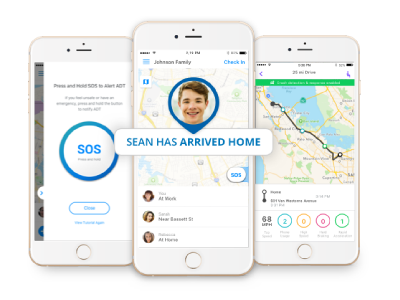Here are five teen driving tips to help boost their safety and help you keep your sanity.
1. Model your expectations
2. Provide practical knowledge
3. Create a contract
4. Talk about accidents
5. Get real-time peace of mind
The day has finally arrived—your teen is officially licensed to operate a vehicle. They've spent hours driving under your supervision, passed the test with flying colors and are now eager to get on the road and claim their newly-won independence. You, meanwhile, are simultaneously proud and terrified. You've done the heavy lifting by preparing them, but it's hard to let go.
Model your expectations
You've talked to your teen about safe driving: Respecting others on the road, obeying the speed limit and staying calm under pressure. The (often) harder task? Modeling this behavior. Here's why it matters: Your teen grew up watching you drive, learning your habits and creating their own concept of "safe driver" based on your actions. As noted by Teen Driving, it's critical for parents of new teen drivers to model driving safety by following all the rules of the road, which includes keeping smartphones out of reach or paired with hands-free systems.1
Provide practical knowledge
Adults pick up all sorts of useful car knowledge over a lifetime of driving. Most teenagers, however, are at a disadvantange because they don't have any practical skills beyond the basic operation of vehicles. Parents need to provide more useful knowledge about complete car safety, including:
- How to change a tire—While the hope is that teens will call in case of an emergency, what happens if they're out of cell signal range or lose their phone? Show teenagers where the spare tire is located, how to access the jack and what steps they need to follow to safely change a tire. A YouTube video won't cut it here. Get your teen outside and get their hands dirty.
- What to have on hand—This includes a spare GPS in the glove box, a first-aid kit in the back seat or trunk, snow shovel, a jerrican and blankets or warm clothing in case they become stranded.
Create a contract

According to Drive It Home, one way to help improve teen driving safety is creating a "new driver" contract, signed by both the parents and the teen. In the contract, lay out specific rules and expectations, such as when the car can be used or what the consequences will be if your teen breaks the law or damages the vehicle.2 Include provisions for expanding privileges if your teen keeps up their end of the contract.
The key for parents is to carry out consequences as stated in the contract. If your teen was caught speeding and the consequence is no driving for a month, follow through. The end result is a safer teen driver who knows their limits.
Talk about accidents
Teens need to know what they should do if an accident occurs. First, make sure they prioritize safety, since even seemingly minor accidents can cause injuries and substantial car damage. Teach them to call EMS or the local police if they get into an accident. For all accidents — even minor parking lot scrapes—teenagers must have their insurance information on-hand and request the same from any other drivers involved. According to the CDC, "teen drivers ages 16 to 19 are nearly three times more likely than drivers aged 20 and older to be in a fatal crash."3 While this fact is scary, it's possible to mitigate the risk by talking frankly about accidents with your teen.
Get real-time peace of mind

ADT Go gives you the benefit of real-time crash alerts*, vehicle speed monitoring, easy access to roadside assistance and one-touch emergency SOS with its Go app.4 Receive notifications when your teenager gets home from school and even get driving reports on your teenager's trip; you'll get peace of mind while they get their independence.
You can't avoid it. Your teenager is behind the wheel and out on their own. Boost their driving safety and keep your sanity by modeling good behavior, offering useful knowledge and a clear-cut contract, being up-front about accidents and leveraging ADT Go to help reduce teen driving risk.
*crash detection feature does not detect 100% of automobile crashes. You phone was be on, fully-powered and functional for ADT Go services to function properly.
Bibliography:
1) "Tips for Parents" Teen Driving, accessed January 24th, 2018. http://teendriving.com/driving-tips/tips-for-parents/
2) "Make a Contract to Drive With the New Driver Deal" Drive It Home, accessed January 24th, 2018. http://driveithome.org/stayinvolved/new-driver-deal
3) "Motor Vehicle Safety." Centers for Disease Control and Prevention. October 16, 2017. Accessed January 30, 2018. http://www.cdc.gov/motorvehiclesafety/teen_drivers/teendrivers_factsheet.html





